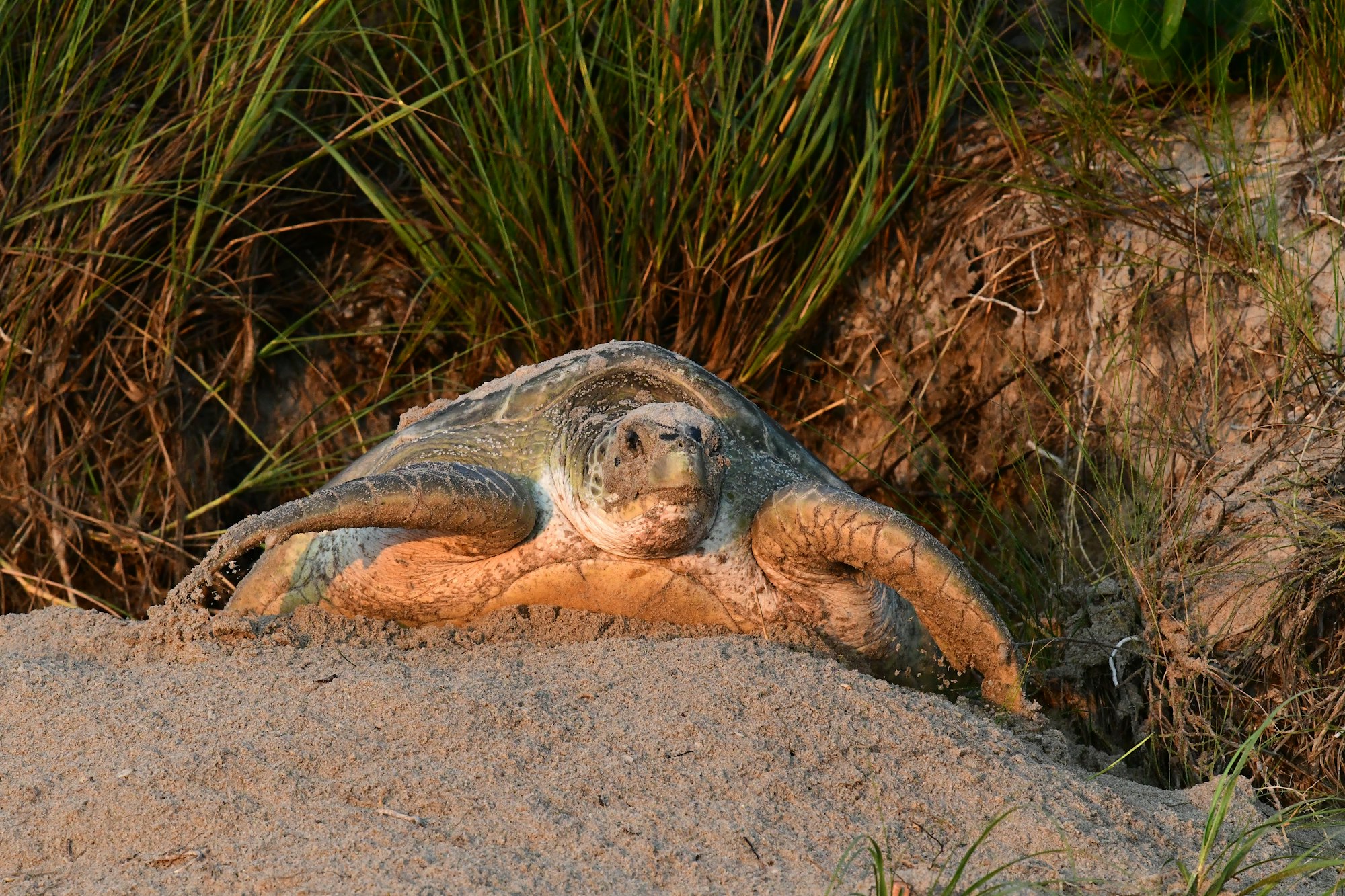Sea turtle nesting season is underway

.
In Indian River County, sea turtle nesting season began on March 1st and runs through October 31st annually. During this special time of year, adult sea turtles - including loggerhead, green, and leatherback sea turtles - return to our sandy shores along the Atlantic Ocean to lay their eggs. Not only do they return to shore, incredibly these females return to the very beaches they hatched from themselves at least 25 to 30 years prior. Over 90 percent of the nation’s sea turtle nests are laid in Florida! Each nest contains 100-150 eggs, which take approximately 65 days to incubate. Sadly, only one out of every 1,000 hatchlings will reach adulthood. The magnificent sea turtles, sandy nests and cute hatchlings are all protected. So, Indian River County's Coastal Engineering division closely monitors the beaches, including in Orchid, throughout this eight-month period.
Part of this effort is to make sure that precautions are being taken by beachside property owners and beach goers in regard to lighting.
- Artificial lights (including from flashlights, flash photography, cell phones, and bonfires) are detrimental to the wellbeing of sea turtles and their hatchlings.
- Lights discourage adult turtles from laying nests and can cause hatchlings to crawl the wrong direction causing them to perish.
- All lights illuminating buildings or associated grounds must be shielded in such a manner that they are not visible from the beach. Lights illuminating dune crosswalks must also be covered.
Another part is counting and geotagging nests. Not all nests are physically marked with stakes and flagging. In fact, fewer than 10 percent of the nests laid in Indian River County will be visibly marked. These nests are to be monitored for external influences such as wash overs from tides and ghost crab activity. Additionally, some nests are marked because of their sensitive location. Remember that 90% of nests are unmarked, so be extra cautious selecting where to install your umbrella this time of year.
To help make 2025 a successful year, remember that sea turtles are very particular when choosing a suitable nesting site and can scare easily.
- Keep a safe distance of at least 10 feet and remain behind the animal where it can't see you.
- Be careful not to use flash photography, which can also frighten her away.
- Touching these protected species (including their eggs) without a permit is against the law.
- Tracks left by turtles (often similar to tire tracks) should be left undisturbed, because these are used within the Sea Turtle Conservation Program to identify the species of turtle and to find their nests.
- Beaches should be kept clear of debris and holes in the sand should be filled, so that sea turtles' arduous journey onto the beach and the hatchlings' passage to the ocean aren't made even more difficult. It also helps keep the biologists, conducting their work in the low light of dawn, from tripping or falling!
Dog owners are asked to be extra mindful that sea turtles and their nests are not disturbed by their four-pawed pals. This is also true of any leashed dogs visiting the beach of course. See information about local regulations for dogs on the beach online or contact (772) 581-2770 for assistance.
If you observe sick or injured sea turtles, or are aware of people harassing sea turtles, call the Florida Fish and Wildlife Commission (FWC) Hotline at (888) 404-3922.
Published on May 7, 2025
